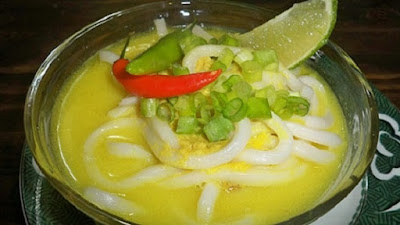The uniqueness of Indonesian recipes
The uniqueness taste of Indonesian cuisine
With regional and cultural diversity, products and food are different places. But every Indonesian cuisine has a characteristic that is delicious and the seasoning is felt. Moreover at this time the cuisine of Indonesia has been packaged in a modern and in demand by many people. There are bakpao derived from cassava, cassava cheese and other traditional food that is formed unique.
Indonesian food has many advantages besides the delicious taste. Excess Indonesian cuisine is low in fat and free from harmful preservatives. as it is known that Indonesia is rich in spices that can also be used as a natural dye and preservative of cooking. Others with non Indonesian foods are full of synthetic materials harmful to health. Natural Indonesian cuisine is preferred because it has its own flavor. In addition, the typical cuisine from Indonesia is rich in fiber. For example tubers that can now be processed into a delicious meal. Foods that contain lots of fiber have a positive impact on digestion.
To produce Indonesian cuisine that has the characteristic of natural and indigenous spices required from Indonesia or tropical countries like Indonesia.
 |
variety of Indonesian foodIndonesia countryIndonesia is one of the five main archipelagos together with Japan, Philippine, New Zealand, and the British Isles.
Indonesian cuisine is one of the
most vibrant and colorful cuisines in the world, full of intense flavor. It is diverse, in part because Indonesia is composed of approximately 6,000 populated islands of the total 18,000 in the world's largest archipelago, with more than 300 ethnic groups calling Indonesia their home. Many regional cuisines exist, often based upon indigenous culture and foreign influences. Indonesia has around 5,3505 traditional recipes, with 32 of them considered the most important. Indonesian cuisine varies greatly by region and has many different influences. Sumatran cuisine, for example, often has Middle Eastern and Indian influences, featuring curried meat and vegetables such as gulai and curry, while Javanese cuisine is mostly indigenous, with some hint of Chinese influence. The cuisines of Eastern Indonesia are similar to Polynesian and Melanesian cuisine. Elements of Chinese cuisine can be seen in Indonesian cuisine: foods such as noodles, meat or fish balls, and spring rolls have been completely assimilated. Indonesia has been involved in trade due to its location and natural resources. Additionally, Indonesia’s indigenous techniques and ingredients were influenced by India, the Middle East, China, and finally Europe. Spanish and Portuguese traders brought New World products even before the Dutch came to colonize most of the archipelago. The Indonesian islands The Moluccas (Maluku), which are famed as "the Spice Islands", also contributed to the introduction of native spices, such as cloves and nutmeg, to Indonesian and global cuisine. Indonesian cuisine often demonstrates complex flavor, acquired from certain ingredients and spices mixture. Indonesian dishes have rich flavors; most often described as savory, hot and spicy and also combination of basic tastes such as sweet, salty, sour and bitter. Five main Indonesian cooking methods are frying, roasting, stir frying, boiling and steaming.
-00-
|




Comments
Post a Comment